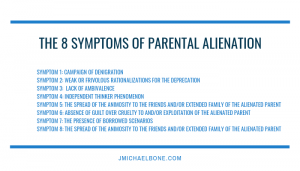My divorce and post decree clients that have people with traits of toxic narcissism often struggle with trying to explain or discuss what it can be like living with someone with such toxic traits, especially when the person is able to maintain a facade of normalcy on their work or neighborhood relationships. Sometimes, I have to coach clients to understand that it can be difficult persuading others as to how emotionally damaging these relationships are, especially when the narcissist is “high functioning,” or otherwise able to disguise their abusive behaviors from the rest of the world. Living with someone with a toxic narcissistic personality disorder can be brutal, especially when the narcissist uses the relationship to emotionally abuse their partner, and tries to turn children, neighbors, and even family members against the otherwise healthy partner.

Signs and symptoms of narcissistic personality disorder and the severity of symptoms vary. People with the disorder can:
- Have an exaggerated sense of self-importance
 Illinois Divorce Lawyer Blog
Illinois Divorce Lawyer Blog





